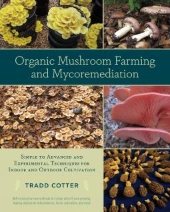




Our Microgreens: http://www.microortaggi.it
 2
2





 1
1




John Elliott wrote:inoculate any oak trees you have.
Our Microgreens: http://www.microortaggi.it




My project thread
Agriculture collects solar energy two-dimensionally; but silviculture collects it three dimensionally.
 2
2




Cj Verde wrote:John, are we talking live Oaks? How do you inoculate? I've got the doohickeys for doing shiitakes but I don't think that's what you mean.
 2
2




"In a fruit forest everyone is happy"- Sepp Holzer
 1
1




Central Taiwan. Pan-tropical Growing zone 10A?
 1
1




Dave's SKIP BB's / Welcome to Permies! / Permaculture Resources / Dave's Boot Adventures & Longview Projects















 1
1




Our Microgreens: http://www.microortaggi.it
 1
1




Iterations are fine, we don't have to be perfect
My 2nd Location:Florida HardinessZone:10 AHS:10 GDD:8500 Rainfall:2in/mth winter, 8in/mth summer, Soil:Sand pH8 Flat




S Bengi wrote:If you can get used coffee grounds from a cafe esp if it is still warm 0-24 hours after it has been made. It will be mostly sterile and you can grow oyster mushroom on it.
I just started a few week ago too. I also have wild inky caps growing in my garden.
Central Taiwan. Pan-tropical Growing zone 10A?





Our Microgreens: http://www.microortaggi.it




William James wrote:Do you think you could you freeze substrate to sterilize it?
-W
Central Taiwan. Pan-tropical Growing zone 10A?




Central Taiwan. Pan-tropical Growing zone 10A?
 1
1




William James wrote:
I have straw, but sterilizing it just doesn't look like it's going to happen, unless I use bleach or something chemical.
William
Central Taiwan. Pan-tropical Growing zone 10A?





Our Microgreens: http://www.microortaggi.it

|
I wasn't selected to go to mars. This tiny ad got in ahead of me:
permaculture bootcamp - gardening gardeners; grow the food you eat and build your own home
https://permies.com/wiki/bootcamp
|




